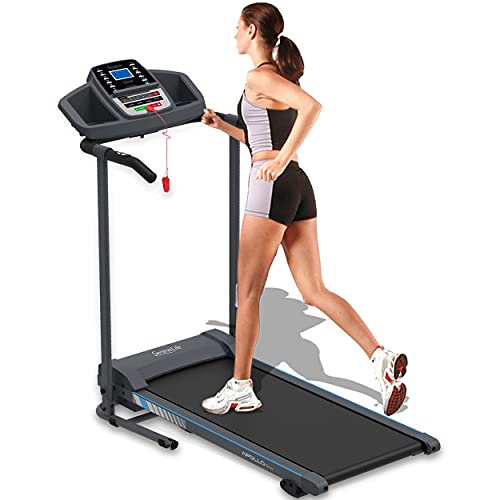11 Ways To Completely Revamp Your Non Electric Walking Pad
Non-Electric Walking Pads: The Future of At-Home Fitness
In the age of digitalization and automation, it might appear counterintuitive to revert to a more standard and mechanical technique to fitness. However, non-electric walking pads have actually become an increasing popular choice for individuals seeking a sustainable, simple option for keeping their physical health without counting on innovation. In this blog post, we will check out the benefits, features, and factors to consider surrounding non-electric walking pads, ultimately making the case for their location in modern-day physical fitness routines.
What is a Non-Electric Walking Pad?
A non-electric walking pad is a manually operated treadmill that needs no source of power aside from the force generated by the user's movement. These devices are created to accommodate walking and running, making them ideal for both light workouts and more intense exercises— while eliminating the necessity for electricity.
Secret Features of Non-Electric Walking Pads
Function
Description
Manual Operation
Relocations with the user's weight and movement.
Foldable Design
Easy to keep and carry.
Adjustable Incline
Enables users to personalize the workout intensity.
Space-Efficient
Ideal for small living areas.
Durability
Built with robust products for longevity.
Economical
Lower preliminary financial investment than electric models.
Benefits of Non-Electric Walking Pads
Non-electric walking pads included a selection of benefits that make them a preferable choice for lots of fitness lovers. Here are a few of the main advantages:
1. Eco-Friendly
One of the most engaging reasons to choose a non-electric walking pad is that it requires no electricity. In a period where environmental effect is a significant concern, using less energy contributes to sustainability.
2. Affordable
Non-electric walking pads are normally less costly to make and buy than their electric counterparts. They likewise eliminate continuous electricity expenses. For users trying to find a budget friendly method to stay fit in your home, this is a considerable benefit.
3. Improved Stability and Safety
Given that non-electric walking pads usually have a lower speed, users have higher control over their speed. This makes them more secure for those who might have problem with balance or coordination, such as the senior.
4. Low Maintenance
Manual walking pads need very little upkeep compared to electric models, which might require regular maintenance and occasional part replacements. This reliability can be a plus for busy individuals.
5. Versatile Workouts
Numerous designs provide adjustable inclines that allow users to boost their workouts. This feature means that anyone can tailor their workout regimen to satisfy their particular objectives, whether it's weight loss or endurance training.
Elements to Consider Before Purchasing
Element
Description
Size
Guarantee it fits your designated exercise area.
Weight Capacity
Check the maximum user weight to make sure strength.
Incline Levels
Identify the variety of incline levels suitable for your physical fitness objectives.
Portability
Assess how simple it is to move and store.
Build Quality
Opt for durable materials to guarantee durability.
1. Size Matters
Before buying, think about where the walking pad will be used. Guarantee it fits comfortably in your desired space, enabling sufficient space for safe movement.
2. Know Your Weight Capacity
The majority of walking pads included a specific weight limit. Make sure to confirm that it can safely support your weight for extended usage.
3. Think About Incline Levels
If you plan part of your physical fitness routine around incline training, check out designs that use several incline levels for diverse strength.
4. Examine Portability
If you have actually limited space, search for foldable designs that can be easily saved away when not in usage.
5. Concentrate On Build Quality
A well-constructed walking pad will extend the life of your equipment. Select models with favorable user reviews about toughness and quality.
Regularly Asked Questions
1. Are non-electric walking pads easy to use?
Yes, they are simple to run— you just step onto the pad and start walking! The motion of walking produces the movement.
2. What is the weight limitation for non-electric walking pads?
Weight limits differ by design, generally varying from 200 to 350 pounds. Constantly check the specifications before acquiring.
3. Is it appropriate for individuals of any ages?
Normally, yes— it is more secure for older grownups due to its lower speed. Nevertheless, similar to any workout program, individuals need to consult a doctor before starting.
4. How does a non-electric walking pad compare to a conventional treadmill?
Although both serve similar purposes, non-electric walking pads are cheaper, quieter, and energy-efficient. Standard treadmills offer innovative features like digital display screens and pre-programmed exercise programs however featured greater expenses and maintenance.
5. Can you run on a non-electric walking pad?
Yes, many models permit light running as well as walking. Nevertheless, similar site may differ from electric treadmills, as users need to generate their motion.
Non-electric walking pads represent a useful, sustainable, and budget friendly option for those aiming to remain active while decreasing their environmental footprint. With the ability to provide reliable exercises with low maintenance expenses, these walking pads may simply be the perfect suitable for people and families looking for a no-fuss approach to fitness.
As the market for health and wellness continues to evolve, non-electric walking pads are a pointer that easy options can typically provide some of the best outcomes. Whether you are a newbie, a seasoned fitness lover, or somebody aiming to introduce regular movement into your lifestyle, buying a non-electric walking pad can be a smart and helpful choice.
